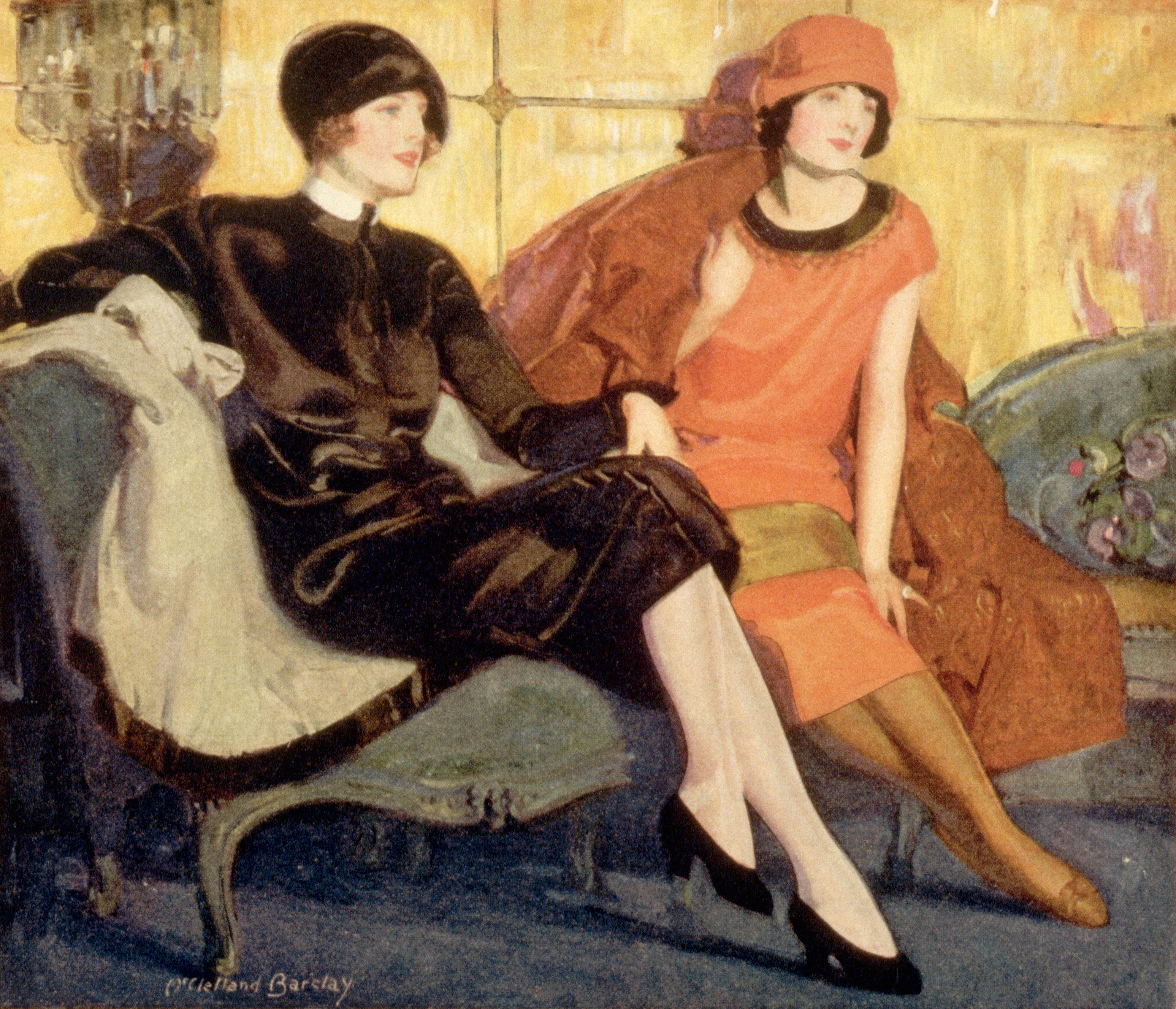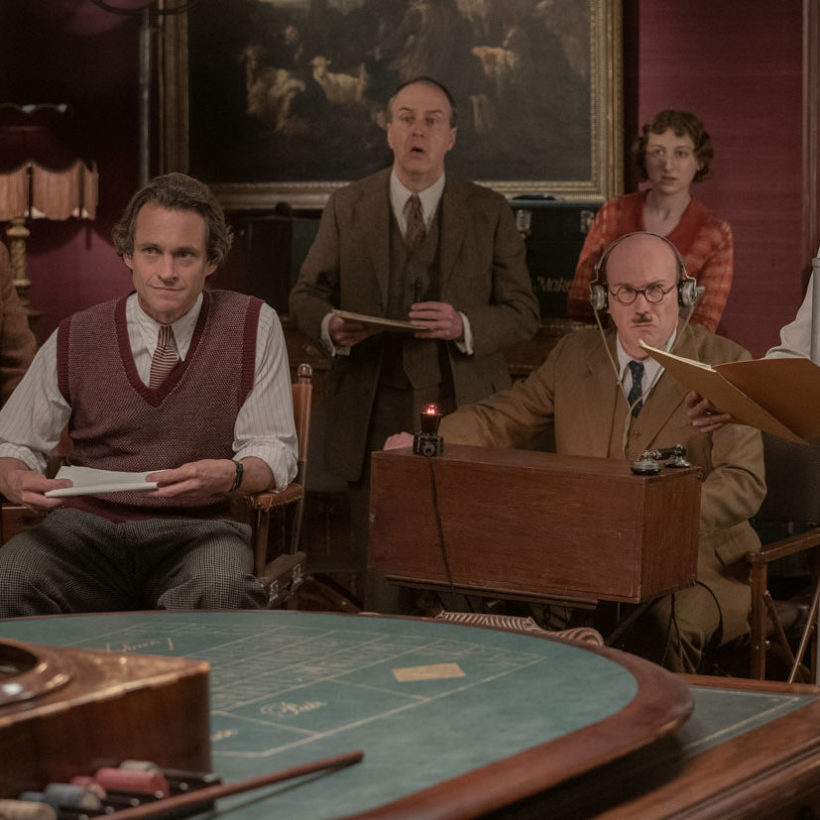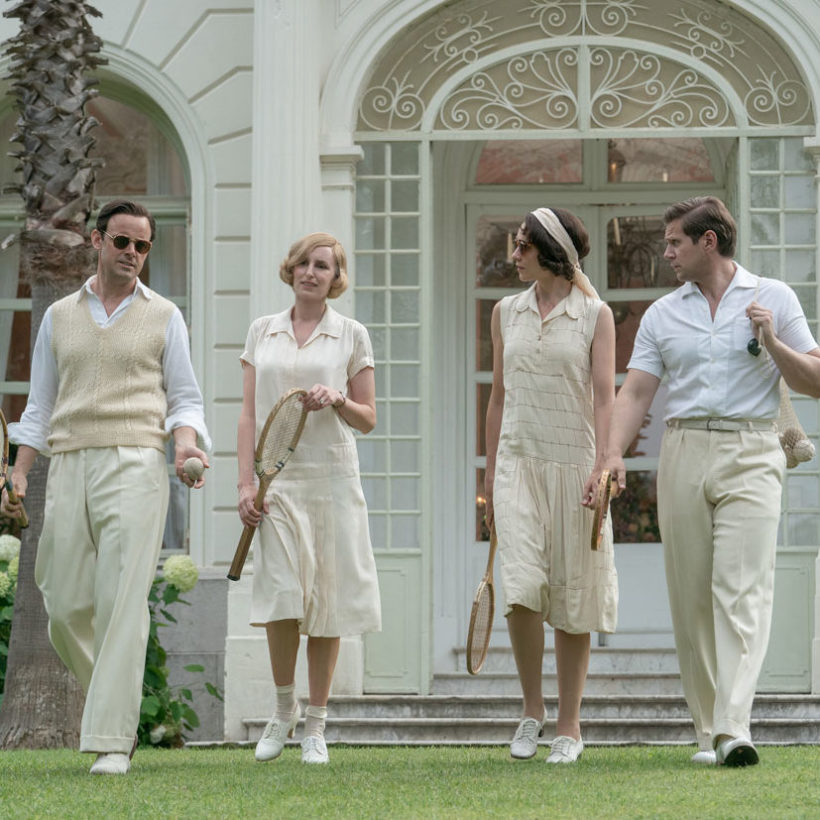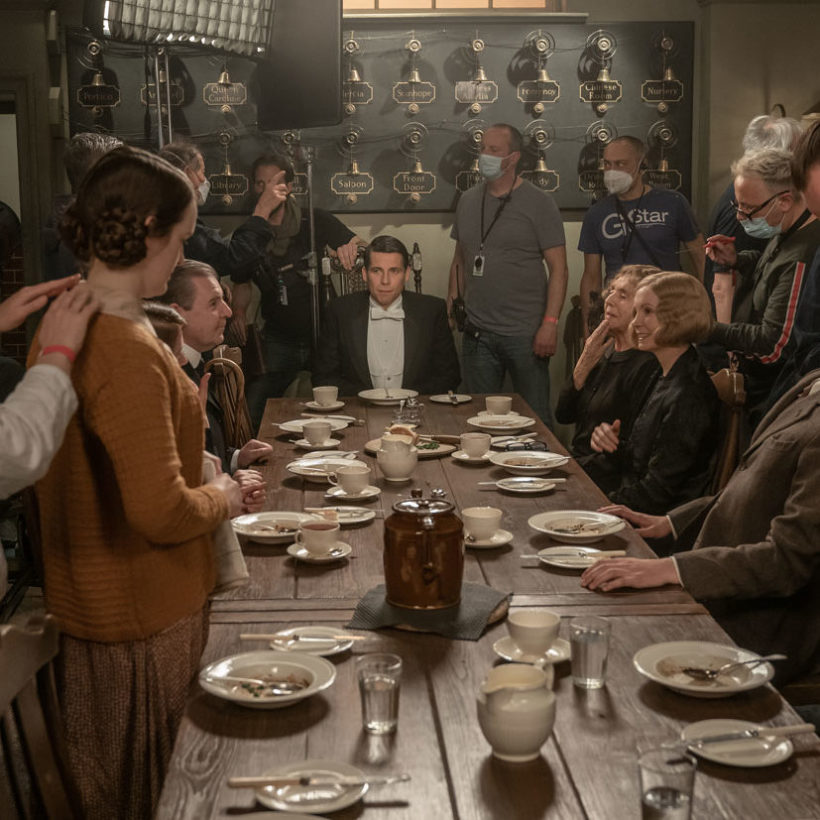We’d bet good money that the ladies of Downton Abbey — both the aristocrats upstairs and the maids downstairs — would have loved to have a skincare set like Sunday Riley’s Downton Abbey: A New Era Wake Up With Me Kit. Unfortunately, skin-purifying exfoliants and complexion-brightening serums weren’t yet de rigeur in the 1920s when the series and film took place. The period, however, was a turning point for women when it came to beauty. The post-war revolution led women to find new ways to express themselves freely. The media also played a significant role in influencing beauty: Because of the lack of eligible men after World War I, getting “noticed” became a priority, and through magazine advertisements, women were encouraged to wear more makeup, cropped haircuts, nail polish, and take better care of their skin. Movies and film stars also popularized the beauty trends of the time and looked to cosmetics to define their features on the big screen. In response, the cosmetics market prospered — and the quality of beauty products started to improve.
In celebration of Downtown Abbey: A New Era (in theaters now!), we go a little deeper into how the makeup, skincare, hair, and nail industries changed during the 1920s and how they related to the characters of the film.

Makeup
The most prominent examples of makeup in A New Era are actress Myrna Dalgleish, who wears a full face of makeup, and Cora Crawley, who sports a soft red lip in the film. Besides lipstick, kohl-rimmed eyes and eyeshadow were also popular. Shadow shades were dark, with deep brown, charcoal gray, and heavy purples being most common. And these shadows were worn from the eye all the way to the brow. Speaking of brows — actresses made theirs thin so they could be more expressive in silent films, and the trend took off. Women even shaved their eyebrows off and then penciled in a thin line. This wasn’t the case for most women, however; the women of Downton would’ve plucked their brows to some degree, but nowhere near the thin line popular with film stars.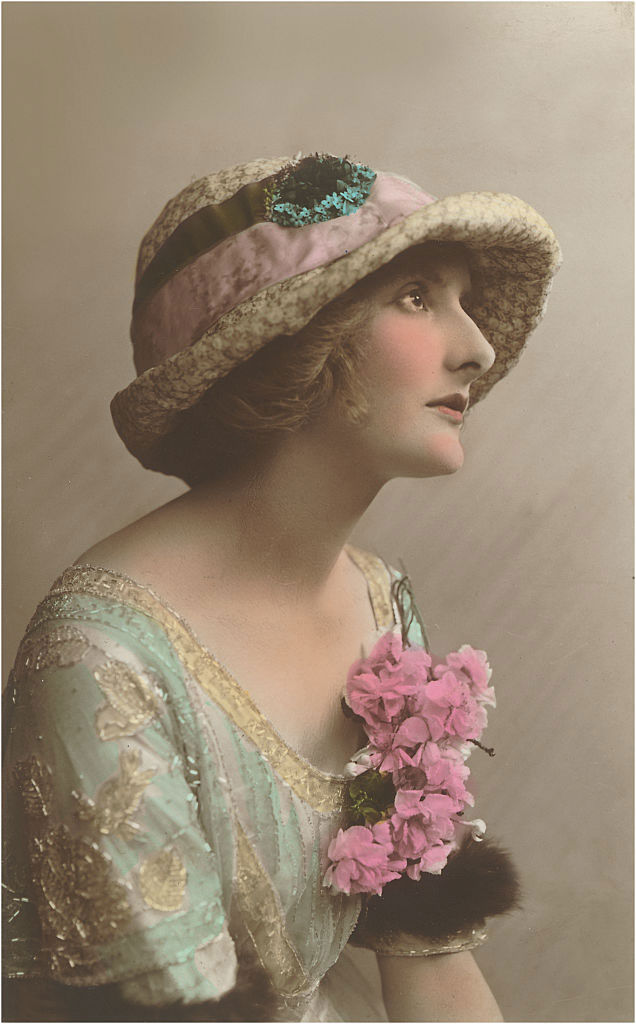
Rouge was another bold element — worn in a circle on the cheeks. And some women even had the equivalent of permanent makeup done with the look. An aesthetician would use needles and dye to do a very bold, rosy red cheek. The women of Downton wouldn’t have done such a procedure. Nor would they have worn mascara, which only became available in a tube in the 1950s. Instead, in the ‘20s, it was common to mix coal and vaseline or use a cake mascara, which was soap and black coloring. The cake needed to be moistened, so women used water or saliva to activate it, giving it the nickname “spit black.”
There weren’t foundations or concealers a century ago, but there were powders; Jonteel was one of the most-used brands. They even offered a green powder for color correction. Between the popularity of Black actress Josephine Baker and Coco Chanel’s famous sunbathing habit, tan skin became the trend near the end of the decade. Coty introduced Coty Tan in the late ‘20s in liquid and powder form.
Skincare
On the subject of tan skin, it was in the mid-1920s that the harmful effects of the sun’s rays were first discovered. But sunscreen didn’t arrive on the market until the mid-1930s. Nonetheless, there was quite a selection of skincare products available in the ‘20s, when the ideal of youth, perpetuated by advertising, really took off. Cold cream was the staple that would have been on most women’s vanity tables. It was used both as a moisturizer and cleanser. A typical routine from the era would have been to “open the pores” with a washcloth moistened in hot water. Then use a cleansing cream on the face and use the cloth to wipe it off. Then a woman may have used a mask — clay masks being a popular option. After that was wiped off, a cold cream was applied. And then maybe an ice cube would’ve been rubbed around the face to “close the pores.” Vanishing cream was a less oily alternative to cold cream for those with oilier complexions. Face cleansing soaps were also popular, and ads detailed how they were gentler than the bar you’d use on the body. Some even claimed to be able to wash away years and fat! (Advertising claims weren’t well regulated at the time.)
Hairstyling

Though it was shocking at first, the bob became less radical by the middle of the ‘20s, and by the end, it was the norm. Older women (like Violet and Cora Crawley) and many of the film’s servants wouldn’t have followed the trend, but most women in their late teens, 20s, and 30s would’ve been on board with the bob. The original cut was sharp, but as the 1930s approached, it took a softer turn, as we see on Lady Mary. Finger waves, like those Lucy Branson wears, were more common in the latter half of the decade as well.
Hair tools also became available with the advent of the hairdryer and curling iron. Frankly, both look a bit intimidating, and there were even deaths reported from hair dryers going awry. Metal rollers also became available for those wanting waves and curls in their crops. Accessories also boomed. Tennis legend Suzanne Lenglen was known for wearing brightly colored hair bands while playing at Wimbledon. In A New Era, Lucy Branson also sports an on-trend head scarf while heading to the courts in France.
Hair products weren’t common, with Brilliantine being the most widely used. Like gel, it added sheen and control to hair, and it was a scented hair oil favored by both men and women. Josephine Baker had her version: the Baker Fix. Another trend Baker helped to popularize was the Eton crop, named after Eton schoolboys — a very short bob that worked well under the fashionable cloche hats, something we see Lady Edith sport in A New Era.
NAils
The concept of matchy-matchy styles became very popular in the ’20s — first with makeup and clothing and then eventually with nails. Women were encouraged to match their lipstick and blush, to match their makeup to their dress whenever possible, and compare their nails to their clothing. Either oval or long, pointed nails were the shape to have, but only for the upper-class. They would’ve been too impractical for working women.

In terms of nail colors, they were limited before the ‘20s, when more options became available. The half-moon manicure was trendy, with red or pink used on the nail bed, leaving the cuticle area untouched. In 1928 Cutex debuted nail polish remover, which made the business of nail polish even more complete. And you thought nail art was a modern thing? Nope, women of the ‘20s also had nail designs, some even choosing to have their friends’ portraits painted on. But don’t expect to see Lady Isobel with Lady Violet painted on her fingers. The ladies of Downton still fall to the side of refined simplicity.
